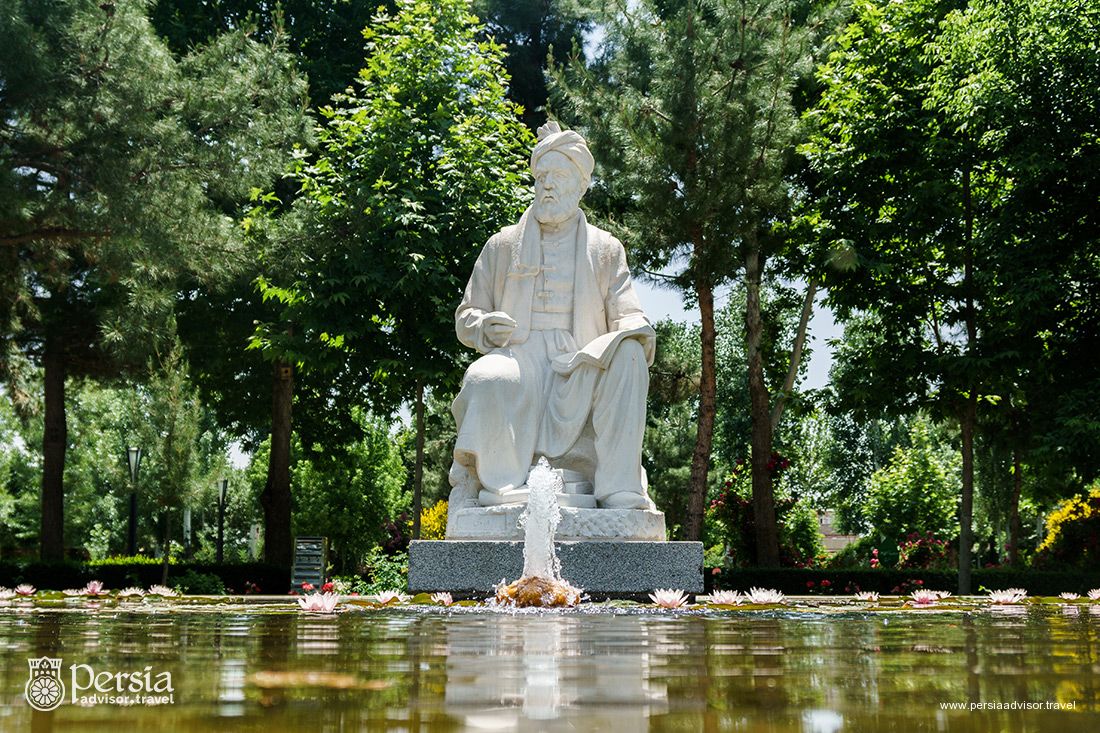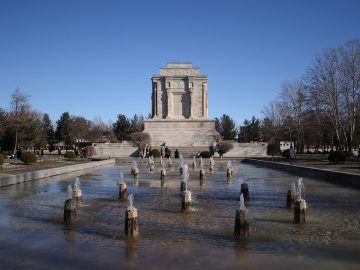
The mausoleum of this great poet that had a tragic death in poverty was made of the finest stones of the time from marble and with the design of the great architect Hossein Lorzadeh. A variety of reasons led to the subsidence of the massive and heavy construct. In 1964, when all the repairing and restorations proved to be futile, the mausoleum was destroyed and replaced with a new monument with stronger foundation.
When Ferdousi died, his body wasn’t buried in the burial ground of the city since he was a Shiite, so he was buried in his garden somewhere near Toos. His grand position in the society attracted many intellectuals to the place. Several times a monument was built over his grave, which each time it was destroyed until in Qajar time, Naser Al Din Shah that heard the situation of the poet’s tomb ordered the construction of a new place over the ruins of the previous one.

Years later, after the World War I, when a sense of nationalism took over the country, Ferdousi became more important than ever. When it was understood that from the Qajar construct just a series of walls and a platform is remained, a collective collaboration was formed to gather enough money to rebuild the mausoleum. With the donations of people, a pyramid shaped tomb was designed that later were rejected for being foreign and was replaced with a design inspired by Pasargadae, Cyrus the Great’s tomb.

It did not take long for the construct to show signs of subsidence for the construction mistakes of the production team, which forced them to demolish and remake the whole construct. The 900 m2 land was dig about 5 m to be used as the foundation of the mausoleum. 24 pillars carry the weight of the first floor and eight pillars carry the weight of the second one. The whole construct follows the traditions of Achaemenian Architecture. Today the construct is a cube made of cement and iron with a marble façade that some lines from Shah Nameh, Ferdousi’s masterpiece, is carved on it.
In 1964, following a sense of nationality that took the society, people donated money to be used in constructing a mausoleum for the great epic poet Ferdowsi that many consider the reason behind the survival of Farsi language after the invasion of Arabs. The mausoleum was inspired by the tomb of Cyrus the Great which proves the importance of the Poet.
The complex where the tomb is part of, includes other sections such as museum and library as well. Adding the importance of the poet himself to the beauty of architecture and the surrounding garden, it is easily understood why the mausoleum is one of the top tourist attractions of Khorasan Razavi.

